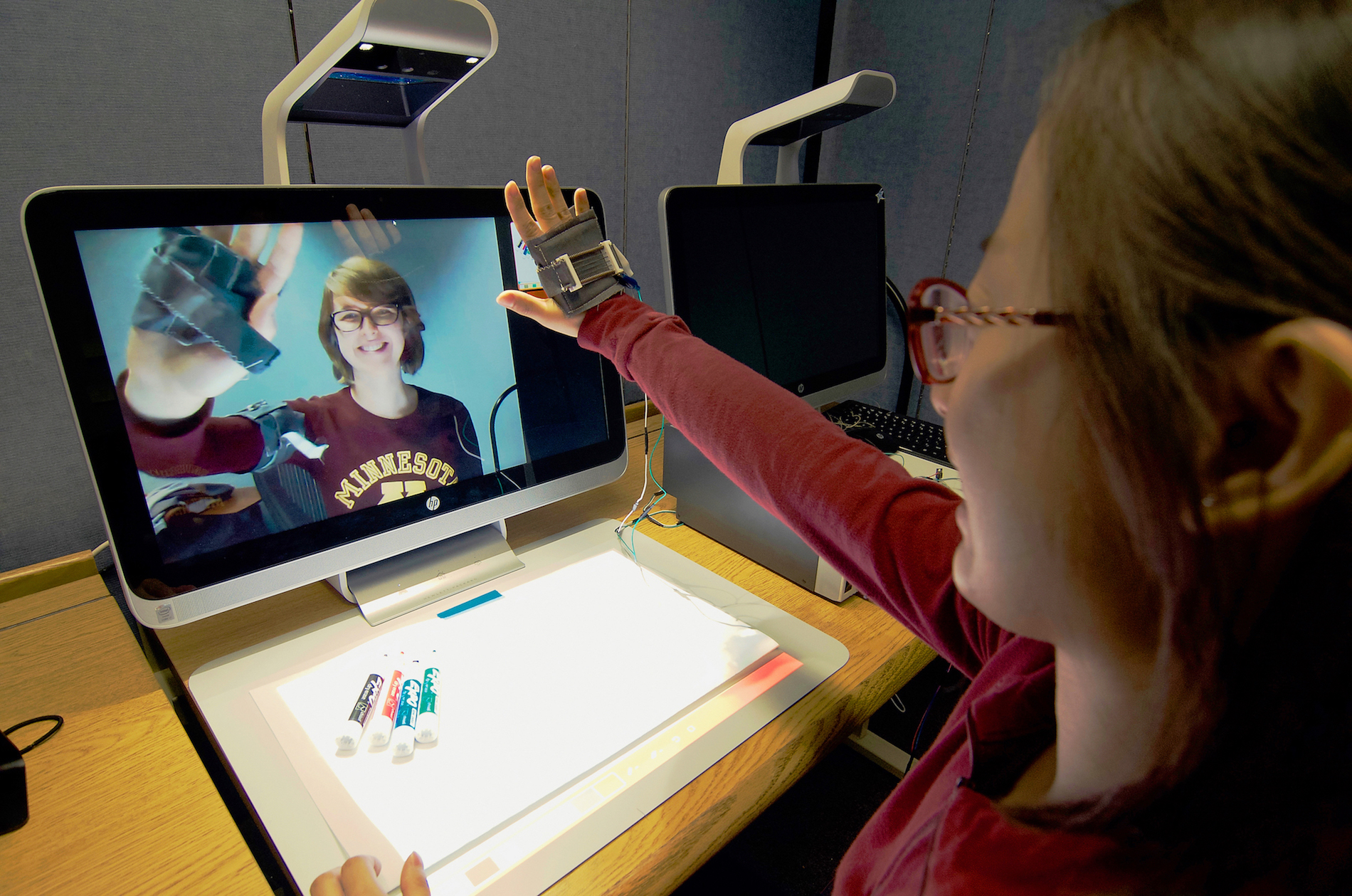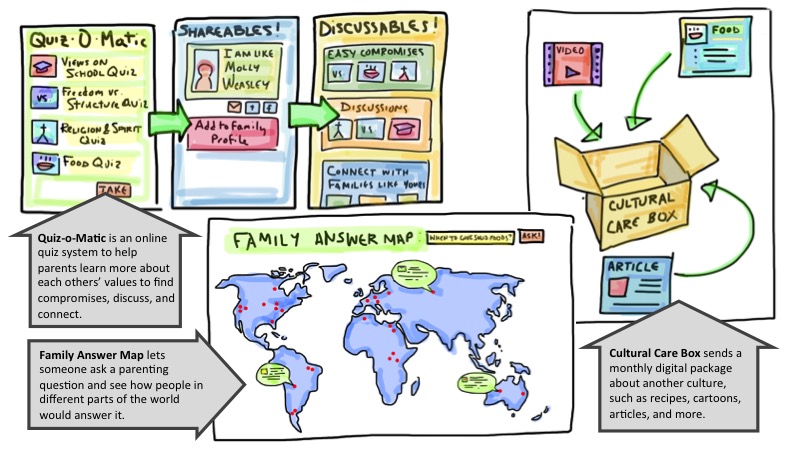13 Rules for Successful Hybrid Meetings: Lessons from 100 Articles
By Lana Yarosh on
By Lana Yarosh, Peter Genatempo, Georgie Jin, Charles Zhang, Joseph Konstan, and Loren Terveen

In-person meetings as we know them are a thing of the past. The pandemic has changed the way we work and the assumption that all the relevant people will gather together in the same room no longer holds true. We have to be prepared to run meetings that include both co-present and remote participants. How do we do these kinds of “hybrid meetings” well, given that the prior wisdom on this topic was to go all virtual or go all in-person?
We read 100 advice articles on hybrid meetings1! Collectively, these articles identified 474 separate pieces of advice, which we’ve distilled down to a lucky 13 practices that you can implement today. As we clustered and selected among the tips, our vision was to focus on supporting those small (4-20 people) quotidian meetings where anyone may chime in and contribute (so, we omitted tips aimed more at running large events, talks, or conferences).
Many of the insights in the articles we reviewed could be described as best practices for ANY good meeting; however these may be particularly important to orient and guide hybrid meetings. The most common piece of advice was to (1) minimize the number, length, and people at any meeting. This means to only have meetings if they are actually necessary, only include the people who actually need to be there (and break up larger meetings with multiple agenda items into smaller ones), and only focus on topics that need synchronous review and moving other content to asynchronous distribution. Second, organizers need to (2) share the pre- and post-meeting materials, including an agenda, outcome goals, presentation materials, notes, recordings, opportunities to provide feedback, and next action steps. These are things that most of us know are a good idea to do when we organize meetings, but we may not always do them for daily in-person meetings. Finally, (3) communicate to the attendees the expectations of the meeting. This may include practices like raising your hand vs. jumping in, no side conversations, no multitasking, etc.
We identified another set of tips that could be described as best practices for virtual meetings, but that are important for hybrid meetings as well. (4) Support all participants in using the communication technologies, including having a meeting participant take on a tech support role during the meeting and making sure participants have a good internet connection, a headset with a microphone, and knowledge of behaviors such as muting when not speaking and authentication/security practices for the meeting. (5) Use video when you can, but prioritize good audio above all else. For virtual meetings, you’ll need to (6) plan and communicate how participation will be moderated, including having a meeting participant take on the role of a moderator and sharing a set of practices for interruptions, asking questions, etc. Finally, if appropriate for the particular meeting, provide some (7) opportunities for informal social interaction before and/or after the meeting either in the same virtual room or using a different tool (e.g., gather.town).
Finally, here’s the new stuff that is specific to hybrid meetings! We’ll borrow some pithy terms from one of the articles, referring to in-person participants as “roomies” and virtual participants as “zoomies.” First of all, (8) consider if the meeting should actually be hybrid or if there are enough zoomies to just have it be a fully virtual meeting. If fewer than half of the people are planning to be roomies, maybe just go all virtual? If you do decide to go hybrid, you should plan to include the zoomies in all the activities, including (9) enabling the chat feature encouraging both roomies and zoomies to make use of it, (10) including zoomies in your interactive activities (e.g., brainstorming, polling), and (11) mixing roomies and zoomies in breakout groups. Hybrid meetings also require special considerations for the room where the in-person portion is held. (12) Give each virtual participant an in-room “avatar,” such as displaying them all on a large screen or having each one on a separate device “in” a seat at the table (maybe even assign an in-person partner for each virtual participant to help them move around the room). Mindfully set up the cameras and microphones in the room, understanding what others will see and hear and (13) ensuring proper positioning of microphones and cameras for the planned activities.
Reflecting on these 13 best practices, there were three things that were clear to us. First, hybrid meetings will take more time to plan well and they’re more exhausting for everybody. More than ever, it’s important to think through whether such a meeting is necessary and how to make the synchronous portions shorter, more focused, and with fewer participants. DO NOT just do a 1-to-1 transfer of all of your group’s in-person meetings to hybrid meetings. Second, in addition to the usual roles of meeting lead and scribe, hybrid meetings need an assigned person providing technical support and another facilitating interaction in an inclusive way. Typically, these will be volunteer meeting participants, but these roles need to be assigned, recognized, and supported! Finally, the in-person experience WILL be different. You can’t just tack on a virtual component to an in-person meeting. Roomies should come prepared to participate on their devices in activities like polls, adding questions to the queue, backchannel and public chat, digital versions of activities like brainstorming, and even digital elements to pre-meeting informal interaction and social activities. Will this sap some of the benefits from meeting in-person and slowly move all meetings to fully virtual? Or will there always be some committed “roomies”? Only time and further research will tell.
These points represent the “folk” wisdom on the topic of hybrid meetings. There is a lot of work to be done to empirically confirm or disconfirm these best practices. If hybrid meetings are here to stay, we will also need to be developing new technologies and environments that make these successful. There is so much to do from architectural design of meeting rooms, to better mics/cameras, to fun collaboration and interaction tools! We think this is really a compelling space for future research!
Do you have some practices that have worked well for you that we missed here? Post below!
Please cite this post as follows: Yarosh, S., Genatempo, P., Jin, Q., Zhang, C., Konstan, J., and Terveen, L. 2021. “13 Rules for Successful Hybrid Meetings: Lessons from 100 Articles.” GroupLens Blog. https://grouplens.org/blog/13-rules-for-successful-hybrid-meetings-lessons-from-100-articles/.
1 We used private browsing mode and to Google the phrase “hybrid meetings best practices.” We reviewed the top 100 articles returned (as sorted by relevance).


